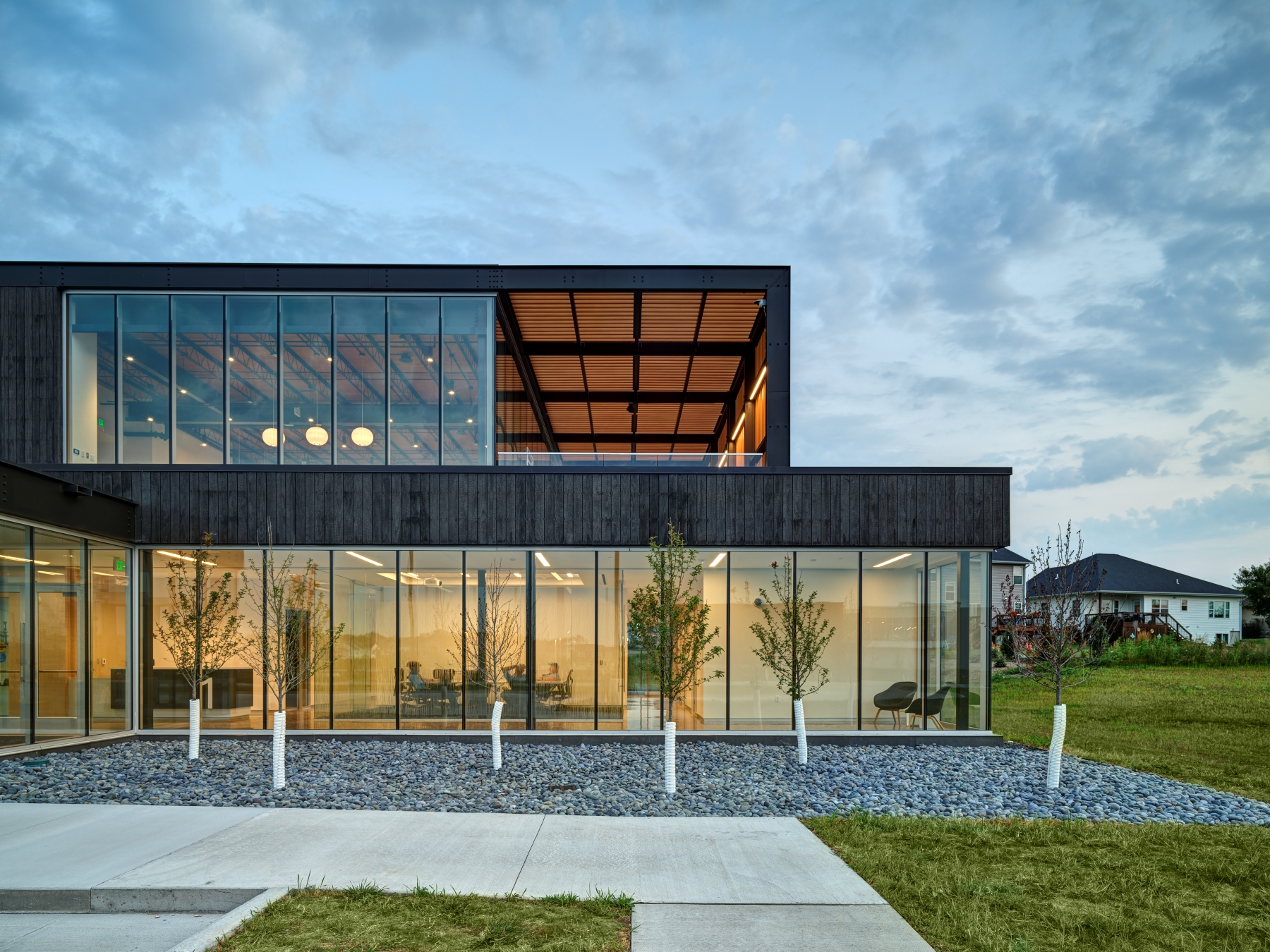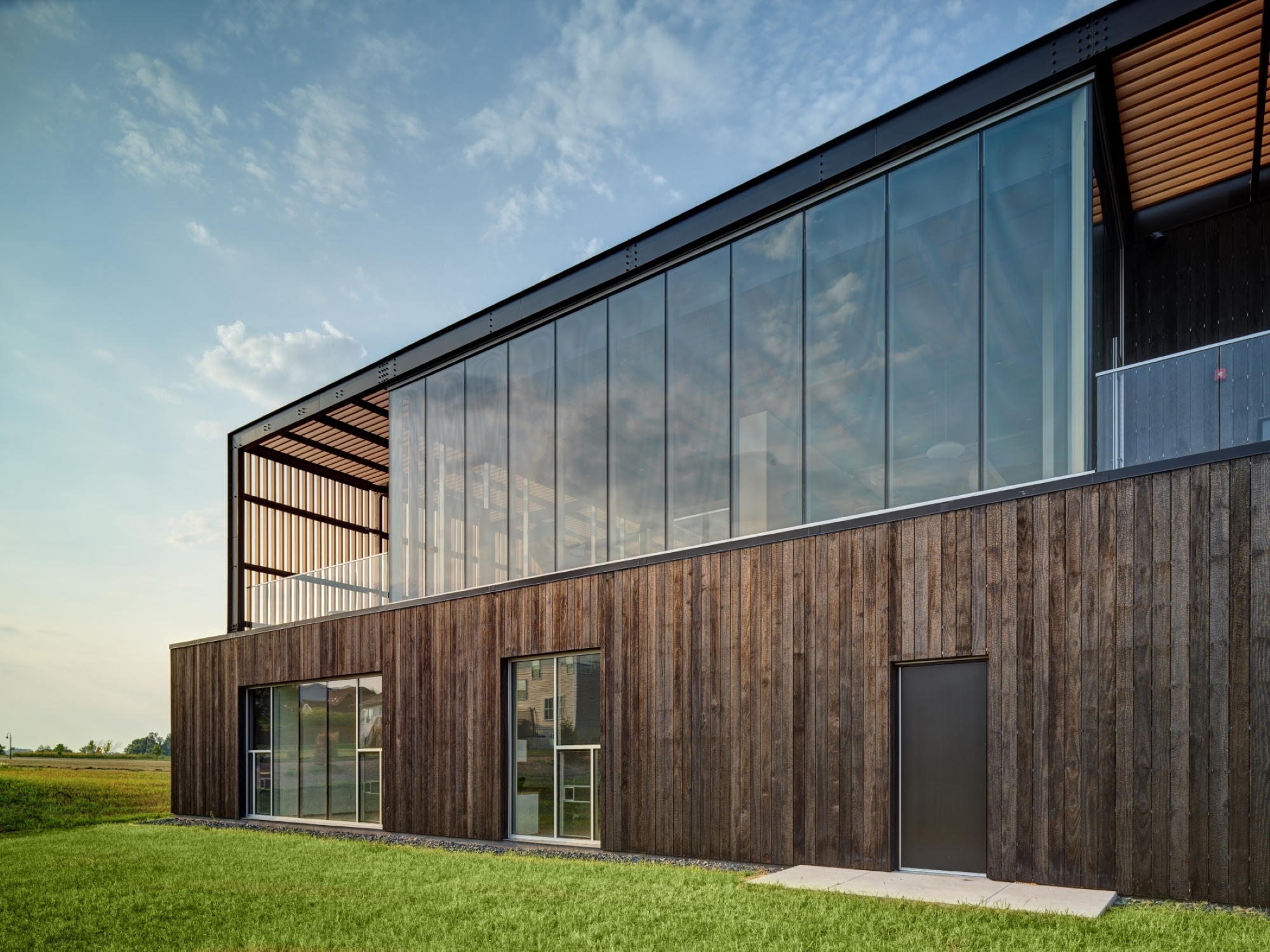Solarban® 60 Starphire® Glass by Vitro Architectural Glass Supports User-Focused Biophilic Design for Midwest Fire Station
PITTSBURGH, July 25, 2024 – Embracing biophilic design principles for the Marion Fire Station in Marion, Iowa, daylighting and views were a major aspect of OPN Architects’ vision for the project.

Solarban® 60 Starphire® glass maximizes daylighting and thermal efficiency
“Studies show connections with nature support positive cognitive, psychological and physiological outcomes. By integrating these principles, we believe we can impact a firefighter's state of mind and how they prepare for activity and recover from the stresses of an event,” explained David Sorg, AIA, OPN Architects, Cedar Rapids, Iowa.
To maximize exposure to daylighting and views, Sorg’s team generously designed and strategically placed storefront and curtainwall systems, and operable window units throughout the two-story, 21,214-sq.-ft. station. To ensure occupant comfort and thermal efficiencies, the architects selected Solarban® 60 Starphire® glass for its high visible light transmittance and low solar heat gain coefficient. The solar control, low-emissivity (low-e) glass blocks 59% of solar energy while allowing 74% of visible light to pass through.
“The specified glass was chosen for having high transparency while maintaining high performance,” he noted.
After completing a daylighting analysis and reviewing elevation data, the storefront ribbon windows and punched openings were sized at 10 feet high while the curtain wall incorporates larger units. Typical glass panel sizes measure 3 ft., 6 in. by 10 ft. by 3 ft., 4 in. with a few variations.
Homing in on the specific needs of firefighters, Sorg explains that fire stations should be designed to reduce response times and functioning, and one of the best ways to accomplish this is to make sure firefighters are in their best mental and physical states. This is why OPN placed such an emphasis on biophilic design for the project.
One of the 14 Patterns of Biophilia, Visual Connections with Nature, established by Terrapin Bright Green in their well-regarded Economics of Biophilia work, has been proven to lower blood pressure and positively impact mood. To optimize this, the building design maximizes lasting visual connections from all hallways and regularly occupied spaces.
“We also made sure these views included biodiversity such as fields, trees, green roofs, a pond and even human activity,” he related. “We were fortunate to have a neighborhood park on one side and a community YMCA on the other.”
Another biophilic design principle is Dynamic and Diffuse Light, which addresses variation in light intensity, color and shadow. This pattern has been shown to positively impact circadian systems, which is very important for firefighters. To incorporate this, shading was a key part of the design.
“In several locations, we have shading elements with corner glazing,” he explained. “From the exterior patios to the interior day room, daylight is received and viewed from multiple angles. This results in dynamic lighting and shading conditions that move between outdoor and indoor spaces.”

The Marion Fire Station incorporates dynamic and diffuse light, which addresses variations in light intensity, color and shadow. This pattern has been shown to positively impact circadian systems, which is very important for firefighters. (Photography: Cameron Campbell)
OPN’s façade design also indirectly impacts several other biophilic principles including Non Visual Connection with Nature and Thermal and Airflow. Firefighters can see manicured grass, prairie, a tree grove, retention pond and wildlife through the Solarban® 60 Starphire® glass. And the operable windows introduce cool breezes and natural ventilation into the space.
Another important aspect of the glass design is the incorporation of ceramic frit in key locations to prevent bird collisions.
The Marion Fire Station has been presented with numerous architecture and design awards, including the 2023 International Living Future Institute: Stephen R. Kellert Biophilic Design Award, the 2023 American Institute of Architects: Justice Facilities Review Award and the 2023 Rethinking the Future Awards in the Public Building category.
Project credits include:
- Architect: OPN Architects
- Glass Fabricator: Oldcastle BuildingEnvelope®, Warrenton, Missouri (Vitro Certified® Fabricator)
- Glazing Contractor: Mid-American Glazing Systems, Davenport, Iowa
- General Contractor: Christner Contracting, Ottumwa, Iowa
- Photographer: Cameron Campbell
For more information about Solarban® 60 Starphire® glass and other Vitro Architectural Glass products, visit www.vitroglazings.com or call 1-855-VTRO-GLS (887-6457).
About Vitro Architectural Glass
Vitro Architectural Glass is the largest glass producer in the Western Hemisphere, manufacturing a range of industry-leading, energy-efficient, high-performance products such as Solarban®, Sungate® and Starphire Ultra-Clear® glasses. Committed to continually raising the industry standard for sustainability, Vitro was the first U.S. glass manufacturer to have its complete collection of architectural glass products earn Cradle to Cradle Certified® status and the first North American manufacturer to publish third-party verified Environmental Product Declarations (EPDs) for flat glass and processed glass products. Additionally, as of April 2024, all Vitro architectural glass products meet the Top 20% Low Embodied Carbon (LEC) material Global Warming Potential (GWP) threshold the U.S. General Services Administration (GSA) established pursuant to the Inflation Reduction Act of 2022 and related guidance from the U.S. Environmental Protection Agency. Vitro operates seven glass production facilities across North America, four residential glass fabrication plants in Canada and one of the world’s largest glass research and development facilities in Pittsburgh, Pennsylvania. For more information, please visit VitroGlazings.com.

Media Contact:
Robert J. Struble
Vitro Architectural Glass
412-820-8138
rstruble@vitro.com
vitroglazings.com
